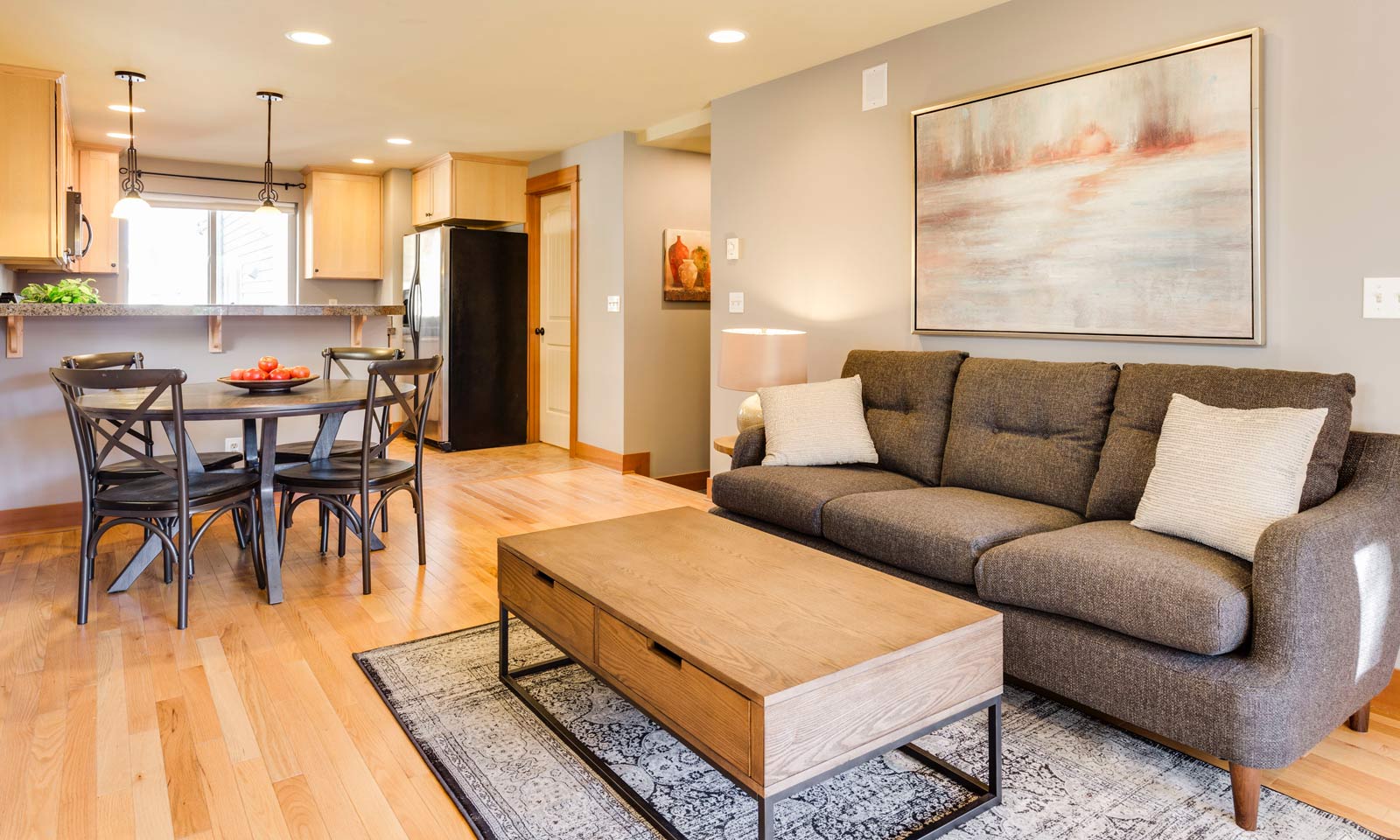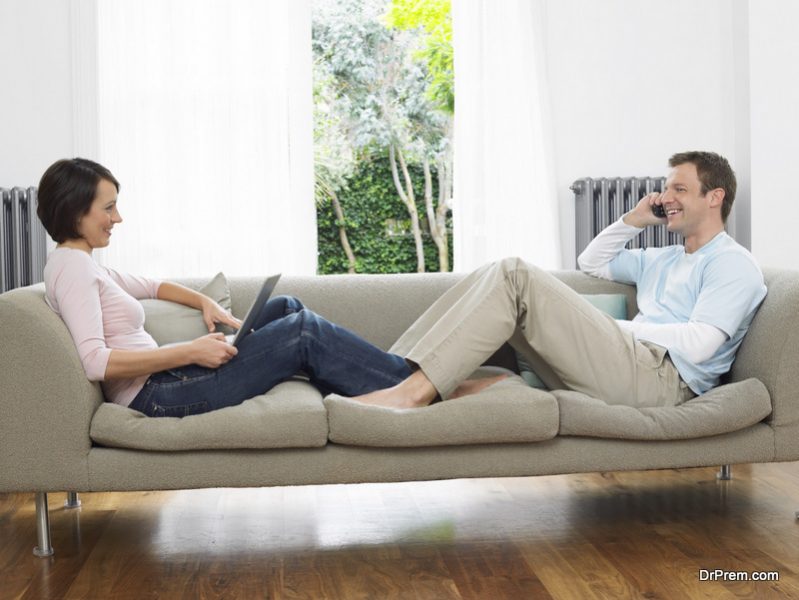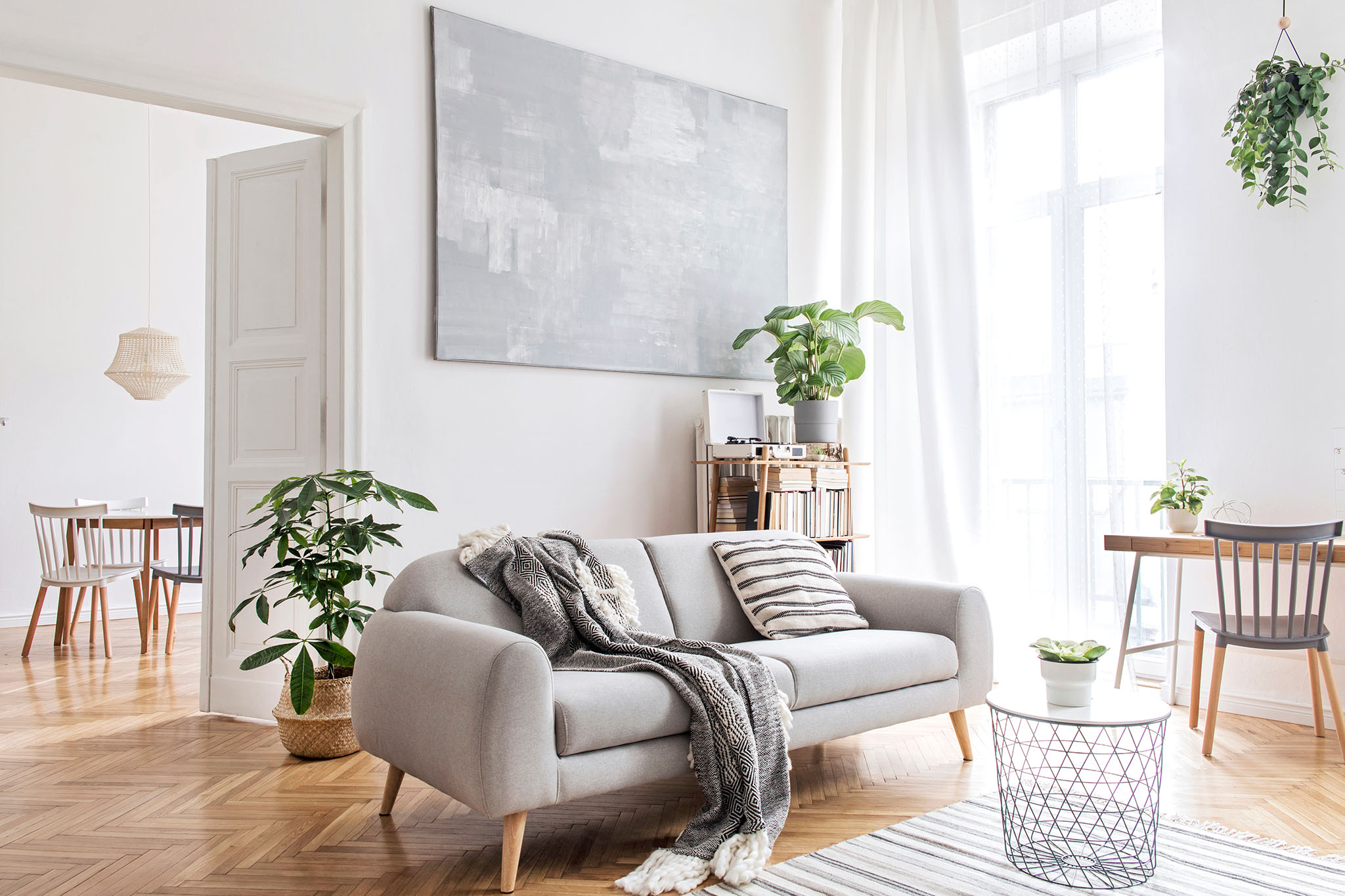1. What is a Spacious Living Room?
A spacious living room is a room that is designed to have ample space for movement, furniture, and activities. It is a room in a house or apartment that is typically used for relaxation, entertainment, and socializing. A spacious living room is not only aesthetically pleasing, but it also serves a functional purpose in a home.
When compared to a small or cluttered living room, a spacious living room offers more freedom and flexibility in terms of design and functionality. It is a room that allows for creativity and personalization, making it an essential feature in any home.
2. How to Define a Spacious Living Room?
A spacious living room can be defined in various ways, depending on individual preferences and needs. For some, it may mean having enough room to accommodate a large group of people for gatherings or parties. For others, it may mean having enough space to move around freely without feeling restricted or cramped.
However, a general definition of a spacious living room is a room that has enough space to comfortably fit the necessary furniture, such as sofas, chairs, and tables, with enough room for easy movement and functionality. It should have a balance of open space and furniture to create a harmonious and inviting atmosphere.
3. Characteristics of a Spacious Living Room
There are several key characteristics that define a spacious living room:
Open Layout: A spacious living room often has an open layout, allowing for easy flow and movement between different areas of the room. This open layout also creates a sense of freedom and airiness.
Ample Natural Light: A spacious living room should have plenty of natural light, either from windows or skylights, to make the room feel brighter and more welcoming.
Well-proportioned furniture: In a spacious living room, furniture should be appropriately sized and proportioned to the room. Oversized furniture can make a room feel cramped, while too small furniture can make the space feel empty.
Minimal Clutter: A spacious living room should be free of clutter, as it can make the room feel smaller and more cramped. Utilizing storage solutions and keeping surfaces clear can help maintain a spacious and organized atmosphere.
4. Tips for Creating a Spacious Living Room
If you want to create a spacious living room in your home, here are some tips to keep in mind:
Choose a Light Color Palette: Light colors, such as white, beige, or pastel shades, can make a room feel more open and airy. Avoid dark colors, which can make a room feel smaller.
Utilize Mirrors: Mirrors can create an illusion of more space in a room by reflecting light and making the room feel brighter and more open. Placing a large mirror on one of the walls or incorporating mirrored furniture can help create a spacious atmosphere.
Keep Furniture to a Minimum: When it comes to furniture, less is more in a spacious living room. Stick to the essential pieces and avoid overcrowding the room with unnecessary furniture. This will help maintain an open and uncluttered feel.
Maximize Vertical Space: Instead of filling up the floor space with furniture, consider utilizing vertical space by incorporating shelves or wall-mounted storage. This will free up floor space and make the room feel more open.
5. The Importance of a Spacious Living Room
A spacious living room is not just a luxury; it serves a functional purpose in a home. It is a place where family and friends can gather, relax, and socialize. A spacious living room also allows for flexibility in terms of design and functionality. It can be used for various activities, such as watching TV, playing games, or even as a home office space.
Moreover, a spacious living room can also add value to a home. Potential buyers are often attracted to homes with large, open living spaces, making a spacious living room a desirable feature for homeowners.
6. Design Ideas for a Spacious Living Room
When designing a spacious living room, the possibilities are endless. Here are some design ideas to help you create a functional and inviting space:
Sectional Sofas: A sectional sofa is a great option for a spacious living room. It can provide plenty of seating while also defining different areas of the room.
Open Shelving: Instead of closed cabinets, consider incorporating open shelving in your living room. This will help maintain a sense of openness and allow for easy access to items.
Large Area Rug: A large area rug can help define the living room space and bring all the furniture together. Choose a light-colored rug to make the room feel more spacious.
Multi-functional Furniture: Investing in multi-functional furniture, such as an ottoman with storage or a coffee table with built-in shelves, can help save space and maintain a clutter-free living room.
7. How to Maximize Space in a Living Room
Even if your living room is on the smaller side, there are ways to maximize the space and create a sense of openness:
Choose Furniture Wisely: Opt for furniture with a slim profile and legs to create a more open feel. Avoid bulky furniture that takes up too much space.
Wall-mounted TV: Instead of a TV stand, mount your TV on the wall to free up floor space.
Keep Surfaces Clear: Avoid cluttering surfaces with too many decor pieces. Stick to a few statement pieces to maintain a clean and spacious look.
Utilize Vertical Space: Similar to a spacious living room, incorporating shelves or wall-mounted storage can help maximize space in a smaller living room.
8. Creating a Functional and Spacious Living Room
A spacious living room doesn't have to sacrifice functionality. Here are some tips for creating a functional and spacious living room:
Define Different Areas: Use furniture, rugs, or lighting to define different areas within the living room, such as a seating area, a reading nook, or a game corner.
Incorporate Storage: Utilize storage solutions, such as baskets, storage ottomans, or built-in shelves, to keep the living room organized and functional.
Add Greenery: Incorporating plants in your living room not only adds a touch of nature but also helps create a more open and inviting space.
Consider Traffic Flow: When arranging furniture, consider the traffic flow in the room to ensure there is enough space for movement and functionality.
9. The Benefits of a Spacious Living Room
Having a spacious living room offers several benefits, including:
Comfort and Relaxation: A spacious living room allows for more comfort and relaxation, making it an ideal space for unwinding after a long day.
Entertainment and Socializing: With enough space for seating and movement, a spacious living room is a perfect place for hosting gatherings and entertaining guests.
Flexibility in Design and Functionality: A spacious living room offers endless possibilities for design and functionality, allowing you to personalize the space to your needs and preferences.
Added Value to a Home: A spacious living room is a desirable feature among potential buyers, making it a valuable addition to any home.
10. How to Measure the Size of a Living Room
Measuring the size of your living room is essential when planning the layout and furniture placement. Here's how to measure your living room accurately:
Measure the Length and Width: Using a measuring tape, measure the length and width of the room from one corner to the opposite corner.
Multiply the Length and Width: Once you have the measurements, multiply the length by the width to get the square footage of the room.
Account for Nooks and Corners: If your living room has nooks or corners, measure those areas separately and add them to the overall square footage.
Consider Ceiling Height: While ceiling height doesn't affect the square footage, it is essential to consider when planning for furniture and decor placement.
The Importance of a Spacious Living Room in House Design

What is a Spacious Living Room?
 A living room is an essential part of any home, and having a spacious living room can make all the difference in your house design. A spacious living room is a room that has enough space to accommodate your family, guests, and all the activities that take place in this central area. It is a room that offers a sense of openness, comfort, and functionality. It is a place where you can relax, entertain, and spend quality time with your loved ones.
A living room is an essential part of any home, and having a spacious living room can make all the difference in your house design. A spacious living room is a room that has enough space to accommodate your family, guests, and all the activities that take place in this central area. It is a room that offers a sense of openness, comfort, and functionality. It is a place where you can relax, entertain, and spend quality time with your loved ones.
Why Does a Living Room Need to Be Spacious?
 A spacious living room is essential for many reasons. Firstly, it allows for better traffic flow and movement within the room. With enough space, you can easily move around without bumping into furniture or feeling cramped. This is especially important when you have guests over, as it creates a welcoming and comfortable environment for socializing.
Secondly, a spacious living room offers more flexibility in terms of design and furniture placement. You can experiment with different layouts and furniture arrangements without feeling limited by the size of the room. This allows for more creativity and personalization in your house design.
Moreover, a spacious living room can enhance the overall aesthetic of your home. It creates a sense of grandeur and sophistication, making your house look and feel more luxurious. This is particularly important if you often host events or parties, as a spacious living room can impress your guests and leave a lasting impression.
A spacious living room is essential for many reasons. Firstly, it allows for better traffic flow and movement within the room. With enough space, you can easily move around without bumping into furniture or feeling cramped. This is especially important when you have guests over, as it creates a welcoming and comfortable environment for socializing.
Secondly, a spacious living room offers more flexibility in terms of design and furniture placement. You can experiment with different layouts and furniture arrangements without feeling limited by the size of the room. This allows for more creativity and personalization in your house design.
Moreover, a spacious living room can enhance the overall aesthetic of your home. It creates a sense of grandeur and sophistication, making your house look and feel more luxurious. This is particularly important if you often host events or parties, as a spacious living room can impress your guests and leave a lasting impression.
How Can You Create a Spacious Living Room?
 There are several ways to make your living room feel more spacious. Firstly, decluttering is key. Get rid of any unnecessary items and furniture that take up too much space. Instead, opt for multifunctional pieces that serve multiple purposes and save space.
Additionally, using light and neutral colors can make a room appear larger and more open. Avoid dark and heavy colors that can make a room feel smaller and cramped. Incorporate natural light by installing large windows or using sheer curtains to allow more light in.
Lastly, choose furniture and decor that are proportionate to the size of your living room. Oversized furniture can make a room feel crowded, while smaller pieces can make a room look empty. Finding the right balance is crucial in creating a spacious living room.
In conclusion, a spacious living room is a vital aspect of house design. It offers numerous benefits such as better traffic flow, flexibility in design, and enhancing the overall aesthetic of your home. By decluttering, using light colors, and choosing the right furniture, you can create a spacious living room that will be the heart of your home.
There are several ways to make your living room feel more spacious. Firstly, decluttering is key. Get rid of any unnecessary items and furniture that take up too much space. Instead, opt for multifunctional pieces that serve multiple purposes and save space.
Additionally, using light and neutral colors can make a room appear larger and more open. Avoid dark and heavy colors that can make a room feel smaller and cramped. Incorporate natural light by installing large windows or using sheer curtains to allow more light in.
Lastly, choose furniture and decor that are proportionate to the size of your living room. Oversized furniture can make a room feel crowded, while smaller pieces can make a room look empty. Finding the right balance is crucial in creating a spacious living room.
In conclusion, a spacious living room is a vital aspect of house design. It offers numerous benefits such as better traffic flow, flexibility in design, and enhancing the overall aesthetic of your home. By decluttering, using light colors, and choosing the right furniture, you can create a spacious living room that will be the heart of your home.



















:max_bytes(150000):strip_icc()/katiehodgesdesignphotoAmyBartlam-8c2256f1abd341d8bf4baf3493669929.jpg)






















































